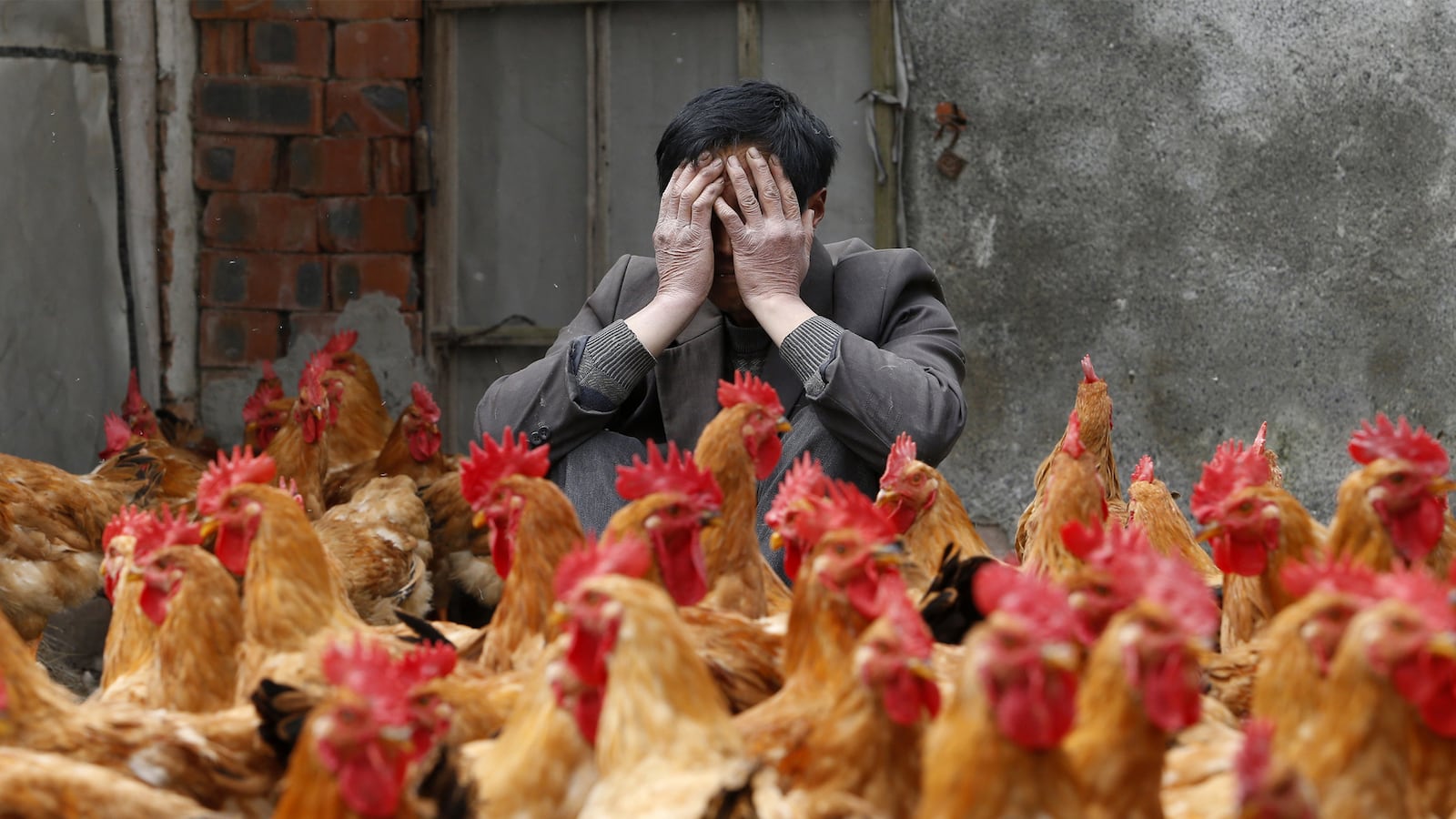The eagle may be regal, the peacock flamboyant, and the California condor downright nightmare-inducing—but when it comes to global dominance, no bird is a match for the chicken.
In Why Did the Chicken Cross the World?: The Epic Saga of the Bird That Powers Civilization, journalist Andrew Lawler chronicles how a wild bird from Southeast Asia ended up being mass-produced by the billions and raised in every country, he writes, except one (Vatican City), and on all continents, except one (Antarctica).
It all began, the consensus seems to be, with the red jungle fowl. Exactly when the transition to modern domestic creature took place, for a bird that is wild to this day, is controversial. Whether that started in southern China 8,000 years ago is debated among scientists, as is the precise time it spread to other civilizations. Lawler is more interested in the more fascinating story of how the chicken spread.
The first, and obvious reason, is the bird’s ability to lay more eggs and grow faster than other types of domesticated birds, such as the goose, quail, bustards, herons, and so on. However, its journey from Southeast Asia to Europe among the Indus, Babylonian, Persian, Egyptian, Greek, and Roman civilizations was not solely because of its nutritious potential.
A combination of the animal’s status as a religious symbol with medicinal properties and as an exotic bird also drove its rise. Lawler notes that in the Zoroastrian religion of the Persians, the rooster was of the utmost importance. It was forbidden to be eaten, and seen as having powers that beat back “demons and sorcerers” as well as “misfortune.” In Rome, he writes, the chicken “predicted the outcome of battles.” Wearing the right foot of a chicken was considered good luck. In the Christian tradition, its importance starts with the rooster crowing during Peter’s betrayal of Jesus, and later a papal decree would insist on its use for all weather vanes. The last words of Socrates before he died, Lawler notes, were, “We owe a cock to Asclepius. Pay the debt. Don’t forget.” In Greek mythology, the species became associated with numerous gods.
The chicken, to this day, is valued for its medicinal properties. Men ate its testicles in ancient Rome for virility. Chicken eggs are still used to make flu vaccines. “No matter what ailed—migraine, dysentery, insomnia, asthma, cough—the chicken provided an all-purpose, twenty-four-hour, two-legged drugstore,” writes Lawler.
While the chicken today might be the least exotic bird one can think of, it was once a gift that wowed kings. In 1474 BC, four of the birds were paid as tribute by Babylonian princes and were a centerpiece of Thutmoses III’s victorious return to Thebes. In the 19th century, bizarre breeds from Asia captivated Queen Victoria, and “soon the exotic fowls and their progeny were distributed to other royals around Europe.”
There is another, albeit unsavory, role Lawler points to—that of cockfighting. To name just a few of the far-flung examples: Cockfighting was a royal sport in ancient China; a tomb outside Jerusalem for a servant of a biblical king features a seal showing a rooster ready to fight; and Henry VIII had a cockpit built in his palace.
In fact, he writes, “No one enjoyed the sport more than the English, who likely were pitting their birds before the arrival of the Romans.” Today, the Philippines is the major destination for those looking to watch cockfights. It is a multimillion-dollar business in which roughly 15 million fowl die a year.
Yet the 20th century wasn’t kind to the chicken. Its adaptability and breeding capabilities ensured that it would be selected for mass production on an unimaginable scale. Billions are raised for slaughter around the world, and even now in the U.S., it is often done so in conditions that can only be described as abominable. Egg-laying hens are placed in cages to unnaturally churn out egg after egg. “Vicious pecking, avian hysteria, mysterious deaths, and even cannibalism” are the results, he writes. The birds are debeaked, suffer ulcers, and terrible feet conditions. Those raised for their meat (200 million tons of it a year) can barely walk because their breasts have been so enlarged.
Yet the book ends on a surprisingly contrarian note.
“One-third of South Asians and more than half of all Sub-Saharan Africans suffer from malnutrition or undernutrition,” he writes. Dependence on crops like rice—as opposed to chicken meat and eggs—in many countries leave populations vulnerable due to diets lacking in protein. In addition, he writes, “If humans continue to eat meat in the 21st century, then industrial chicken is a better option than pork or beef.” Chickens require significantly less land, water, and energy than all other meat options except farmed salmon.
Considering that fact, and how much chicken and how many eggs have been consumed in the West to feed and power our populations over the last century, particularly the U.S., can we really tell developing nations that consuming cheap chicken will not be possible because we finally grew a conscience?






